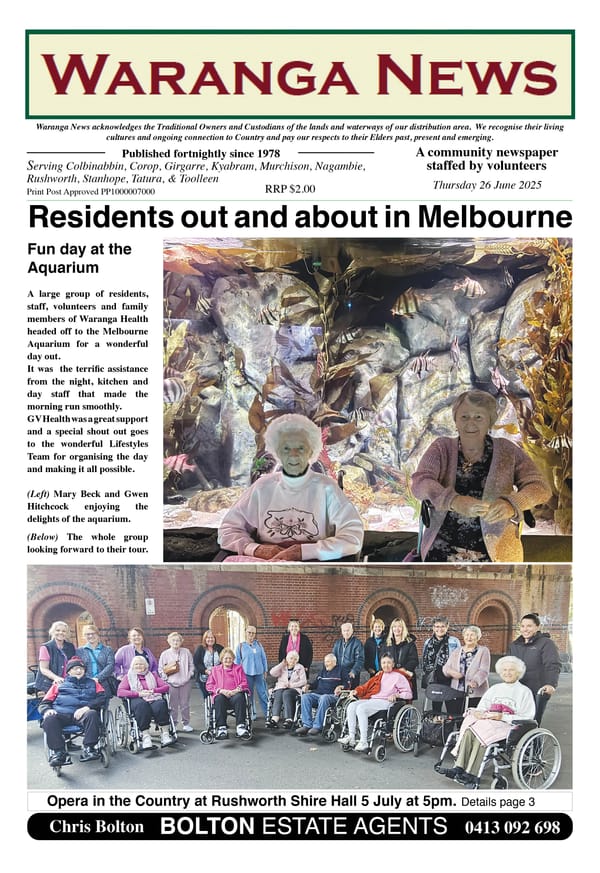15. Terra nulls and European settlement

We tend to have a romantic vision of hard-working European colonists coming in to the “unpopulated” arable parts of Australia to establish productive rural properties. At the time there was genuine belief in the concept of “terra nullius” or “nobody’s land”. That is, the land was deemed to be unoccupied with no owner, and therefore open to settlement by the new arrivals, with the imprimatur of the colonial government of the day.
As we have seen in earlier stories, this was a long way from the truth. The Aboriginal people of the Waranga area had indeed had a very long tenure of the land, where they were easily able to produce more than enough food to meet their needs. When this history was ignored by the new arrivals, it was inevitable that conflict would occur.
CLASH OF CULTURES
One such serious clash of cultures took place on the Campaspe River south of Heathcote in 1838. The Campaspe, from Rochester south to Kyneton, has a history of extreme frontier violence. Part of the explanation for this is that the men employed by the squatters in the late 1830s and 1840s were often hard cases, ex-convicts with a predilection for extreme violence. In a male-dominated society, they targeted Aboriginal women as partners, which was also a source of conflict.
Additionally, Aboriginal people quickly came to the realisation that the newcomers were there to stay, and as a consequence, the resources they were used to harvesting were quickly depleted. Sheep and cattle were a potential alternative new resource, but if they were utilised by Aboriginal people, those people quickly became the targets of retribution.
A BEAUTIFUL STRETCH OF RIVER
If you take a little time out when you drive the back way to from Colbinabbin to Bendigo via Barnadown, by going into any access point on the Campaspe you will see that it is a truly beautiful little river in this area. It is hardly surprising that it was revered by the Gunung Willam, the clan of the Ngurai-illum Wurrung people who called the river and the country to its east home for millennia. As you sit by the river, you wonder where this place fitted into the Songlines of those people, and what significance it had as part of their Dreaming.
Unfortunately, many of the things that made the river so attractive to the Ngurai-illum Wurrung (and further south to the Taungurung and Dja Dja Wurrung) were also the things that were coveted by the European settlers. In particular, it represented a reliable place to water sheep and cattle, in country that could be very dry.



